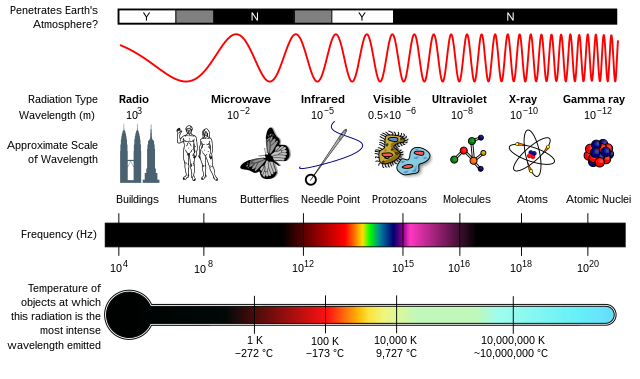---
- § 120.40. Definitions
- § 120.45. Stalking in the fourth degree
- § 120.50. Stalking in the third degree
- § 120.55. Stalking in the second degree
- § 120.60. Stalking in the first degree
---
NY CLS Penal § 120.40. Definitions. (2006)
For purposes of sections 120.45, 120.50, 120.55 and 120.60 of this article:
- 1. "Kidnapping" shall mean a kidnapping crime defined in article one hundred thirty-five of this chapter.
- 2. "Unlawful imprisonment" shall mean an unlawful imprisonment felony crime defined in article one hundred thirty-five of this chapter.
- 3. "Sex offense" shall mean a felony defined in article one hundred thirty of this chapter, sexual misconduct, as defined in section 130.20 of this chapter, sexual abuse in the third degree as defined in section 130.55 of this chapter or sexual abuse in the second degree as defined in section 130.60 of this chapter.
- 4. "Immediate family" means the spouse, former spouse, parent, child, sibling, or any other person who regularly resides or has regularly resided in the household of a person.
- 5. "Specified predicate crime" means:
- a. a violent felony offense;
- b. a crime defined in section 130.20, 130.25, 130.30, 130.40, 130.45, 130.55, 130.60, 130.70 [fig 1] , 255.25, 255.26 or 255.27;
- c. assault in the third degree, as defined in section 120.00; menacing in the first degree, as defined in section 120.13; menacing in the second degree, as defined in section 120.14; coercion in the first degree, as defined in section 135.65; coercion in the second degree, as defined in section 135.60; aggravated harassment in the second degree, as defined in section 240.30; harassment in the first degree, as defined in section 240.25; menacing in the third degree, as defined in section 120.15; criminal mischief in the third degree, as defined in section 145.05; criminal mischief in the second degree, as defined in section 145.10, criminal mischief in the first degree, as defined in section 145.12; criminal tampering in the first degree, as defined in section 145.20; arson in the fourth degree, as defined in section 150.05; arson in the third degree, as defined in section 150.10; criminal contempt in the first degree, as defined in section 215.51; endangering the welfare of a child, as defined in section 260.10; or
- d. stalking in the fourth degree, as defined in section 120.45; stalking in the third degree, as defined in section 120.50; stalking in the second degree, as defined in section 120.55; or
- e. an offense in any other jurisdiction which includes all of the essential elements of any such crime for which a sentence to a term of imprisonment in excess of one year or a sentence of death was authorized and is authorized in this state irrespective of whether such sentence was imposed.
NY CLS Penal § 120.45. Stalking in the fourth degree. (1999)
A person is guilty of stalking in the fourth degree when he or she intentionally, and for no legitimate purpose, engages in a course of conduct directed at a specific person, and knows or reasonably should know that such conduct:
- 1. is likely to cause reasonable fear of material harm to the physical health, safety or property of such person, a member of such person's immediate family or a third party with whom such person is acquainted; or
- 2. causes material harm to the mental or emotional health of such person, where such conduct consists of following, telephoning or initiating communication or contact with such person, a member of such person's immediate family or a third party with whom such person is acquainted, and the actor was previously clearly informed to cease that conduct; or
- 3. is likely to cause such person to reasonably fear that his or her employment, business or career is threatened, where such conduct consists of appearing, telephoning or initiating communication or contact at such person's place of employment or business, and the actor was previously clearly informed to cease that conduct.
For the purposes of subdivision two of this section, “following” shall include the unauthorized tracking of such person's movements or location through the use of a global positioning system or other device.
Stalking in the fourth degree is a class B misdemeanor.
NY CLS Penal § 120.50. Stalking in the third degree. (1999)
A person is guilty of stalking in the third degree when he or she:
- 1. Commits the crime of stalking in the fourth degree in violation of section 120.45 of this article against three or more persons, in three or more separate transactions, for which the actor has not been previously convicted; or
- 2. Commits the crime of stalking in the fourth degree in violation of section 120.45 of this article against any person, and has previously been convicted, within the preceding ten years of a specified predicate crime, as defined in subdivision five of section 120.40 of this article, and the victim of such specified predicate crime is the victim, or an immediate family member of the victim, of the present offense; or
- 3. With intent to harass, annoy or alarm a specific person, intentionally engages in a course of conduct directed at such person which is likely to cause such person to reasonably fear physical injury or serious physical injury, the commission of a sex offense against, or the kidnapping, unlawful imprisonment or death of such person or a member of such person's immediate family; or
- 4. Commits the crime of stalking in the fourth degree and has previously been convicted within the preceding ten years of stalking in the fourth degree.
Stalking in the third degree is a class A misdemeanor.
NY CLS Penal § 120.55. Stalking in the second degree. (2003)
A person is guilty of stalking in the second degree when he or she:
- 1. Commits the crime of stalking in the third degree as defined in subdivision three of section 120.50 of this article and in the course of and in furtherance of the commission of such offense: (i) displays, or possesses and threatens the use of, a firearm, pistol, revolver, rifle, shotgun, machine gun, electronic dart gun, electronic stun gun, cane sword, billy, blackjack, bludgeon, plastic knuckles, metal knuckles, chuka stick, sand bag, sandclub, slingshot, slungshot, shirken, "Kung Fu Star", dagger, dangerous knife, dirk, razor, stiletto, imitation pistol, dangerous instrument, deadly instrument or deadly weapon; or (ii) displays what appears to be a pistol, revolver, rifle, shotgun, machine gun or other firearm; or
- 2. Commits the crime of stalking in the third degree in violation of subdivision three of section 120.50 of this article against any person, and has previously been convicted, within the preceding five years, of a specified predicate crime as defined in subdivision five of section 120.40 of this article, and the victim of such specified predicate crime is the victim, or an immediate family member of the victim, of the present offense; or
- 3. Commits the crime of stalking in the fourth degree and has previously been convicted of stalking in the third degree as defined in subdivision four of section 120.50 of this article against any person; or
- 4. Being twenty-one years of age or older, repeatedly follows a person under the age of fourteen or engages in a course of conduct or repeatedly commits acts over a period of time intentionally placing or attempting to place such person who is under the age of fourteen in reasonable fear of physical injury, serious physical injury or death [fig 1]; or
- Commits the crime of stalking in the third degree, as defined in subdivision three of section 120.50 of this article, against ten or more persons, in ten or more separate transactions, for which the actor has not been previously convicted.
Stalking in the second degree is a class E felony.
NY CLS Penal § 120.60. Stalking in the first degree. (2000)
A person is guilty of stalking in the first degree when he or she commits the crime of stalking in the third degree as defined in subdivision three of section 120.50 or stalking in the second degree as defined in section 120.55 of this article and, in the course and furtherance thereof, he or she:
- 1. intentionally or recklessly causes physical injury to [fig 1] the victim of such crime; or
- 2. commits a class A misdemeanor defined in article [fig 1] one hundred thirty of this chapter, or a class E felony defined in [fig 2] section 130.25, 130.40 or 130.85 of this chapter, or a class D felony [fig 3] defined in section 130.30 or 130.45 of this chapter.
Stalking in the first degree is a class D felony.



















